Habitats and biotopes
Type of resources
Available actions
Topics
Keywords
Contact for the resource
Provided by
Years
Formats
Representation types
Update frequencies
status
Scale
-
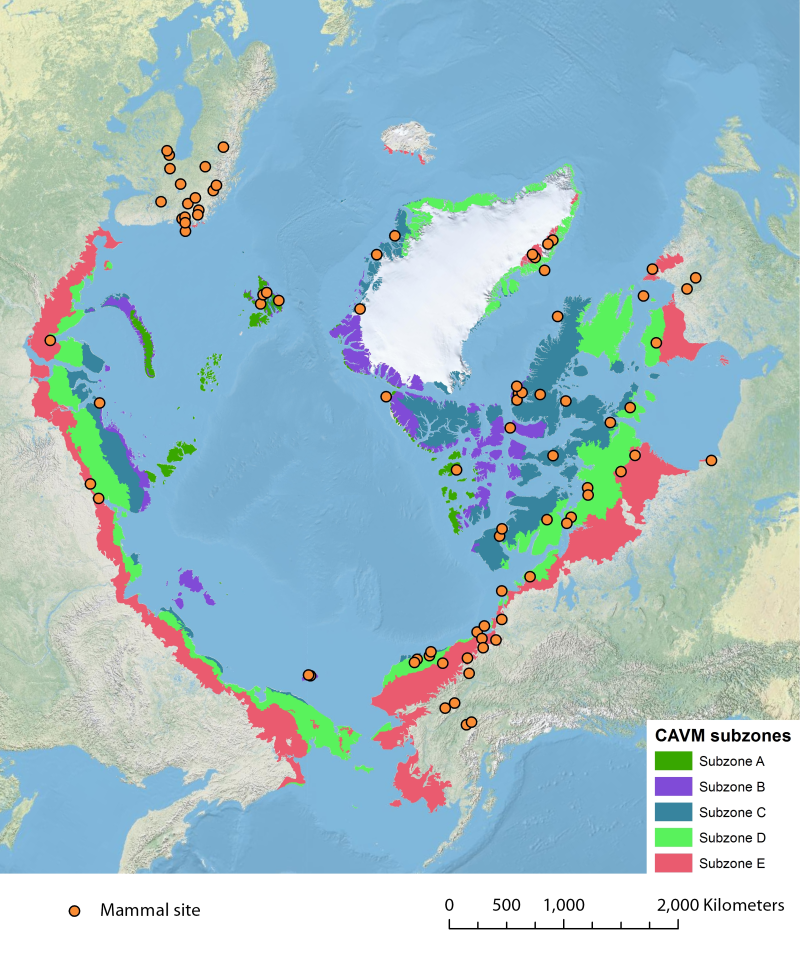
Location of long-term mammal monitoring sites and programs. Comes from the Arctic Terrestrial Biodiversity Monitoring Plan is developed to improve the collective ability of Arctic traditional knowledge holders, northern communities and scientists to detect, understand and report on long-term change in Arctic terrestrial ecosystems and biodiversity..
-
Appendix 10.2. Data on diversity of lichens and lichenicolous fungi in the Arctic and separately for the sectors of the Arctic (Beringia, Canada, North Atlantic, European Russia, W and E Siberia) and the single floristic provinces: numbers of species, numbers of species in the low and high Arctic, percentage of species with respective growth form (crustose, squamulose, foliose, fruticose), the estimated number of missing crustose lichen species (explanations below), percentage of species on the respective substrate on which the lichen species grow, and rarity of species within and outside the Arctic.
-
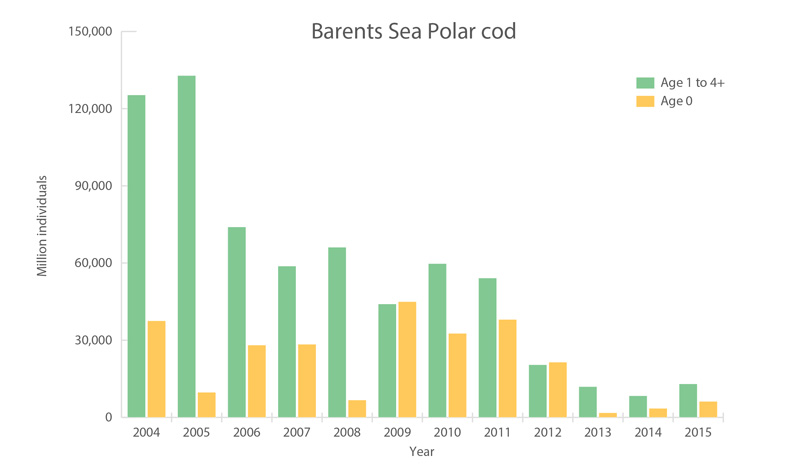
Polar cod in the Barents Sea. Acoustic estimate of polar cod 1-year-old and older (green) and pelagic trawl index of age 0-group abundance (yellow). Source: Joint IMR-PINRO ecosystem survey (Prozorkevich 2016). STATE OF THE ARCTIC MARINE BIODIVERSITY REPORT - <a href="https://arcticbiodiversity.is/findings/marine-fishes" target="_blank">Chapter 3</a> - Page 116 - Figure 3.4.3
-
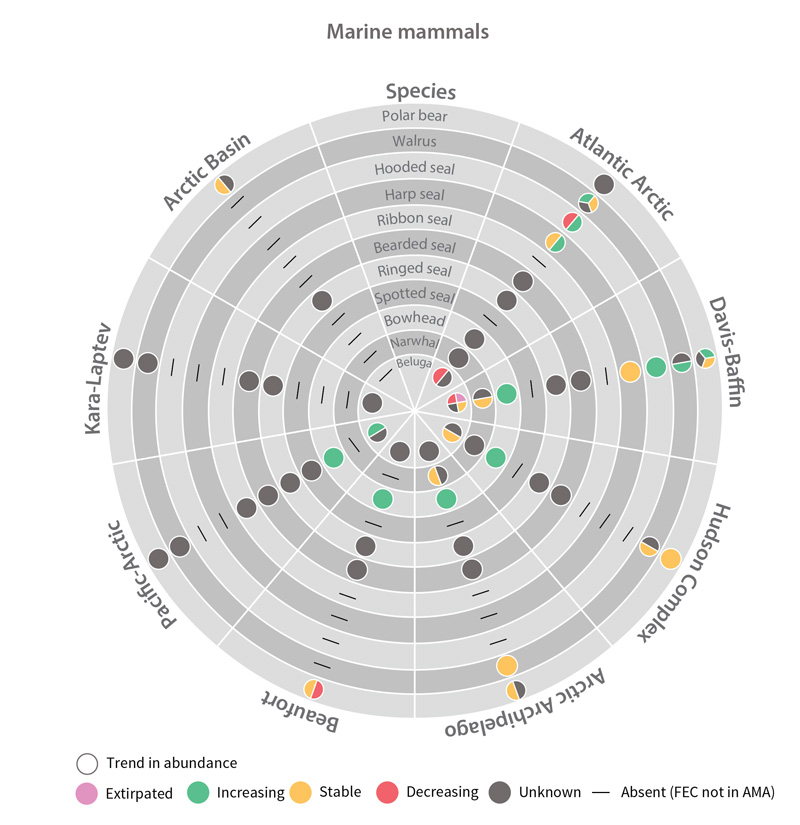
Trends in abundance of marine mammal Focal Ecosystem Components across each Arctic Marine Area. STATE OF THE ARCTIC MARINE BIODIVERSITY REPORT - Chapter 4 - Page 182 - Figure 4.6
-
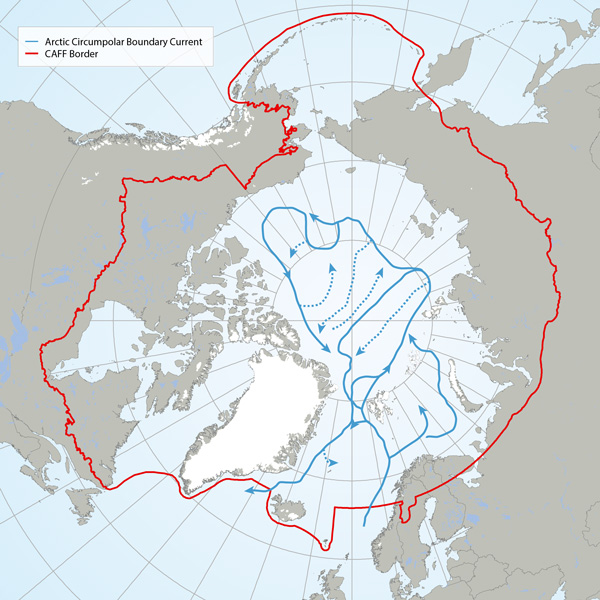
The Arctic Basin where suggested future long-term monitoring of trawl-megafauna should capture possible changes along the flow of the Arctic Circumpolar Boundary Current (Figure A, blue line) and the Arctic deep-water exchange (Figure b, green line). Adapted from Bluhm et al. (2015). STATE OF THE ARCTIC MARINE BIODIVERSITY REPORT - <a href="https://arcticbiodiversity.is/findings/benthos" target="_blank">Chapter 3</a> - Page 88 - Figure 3.3.1
-
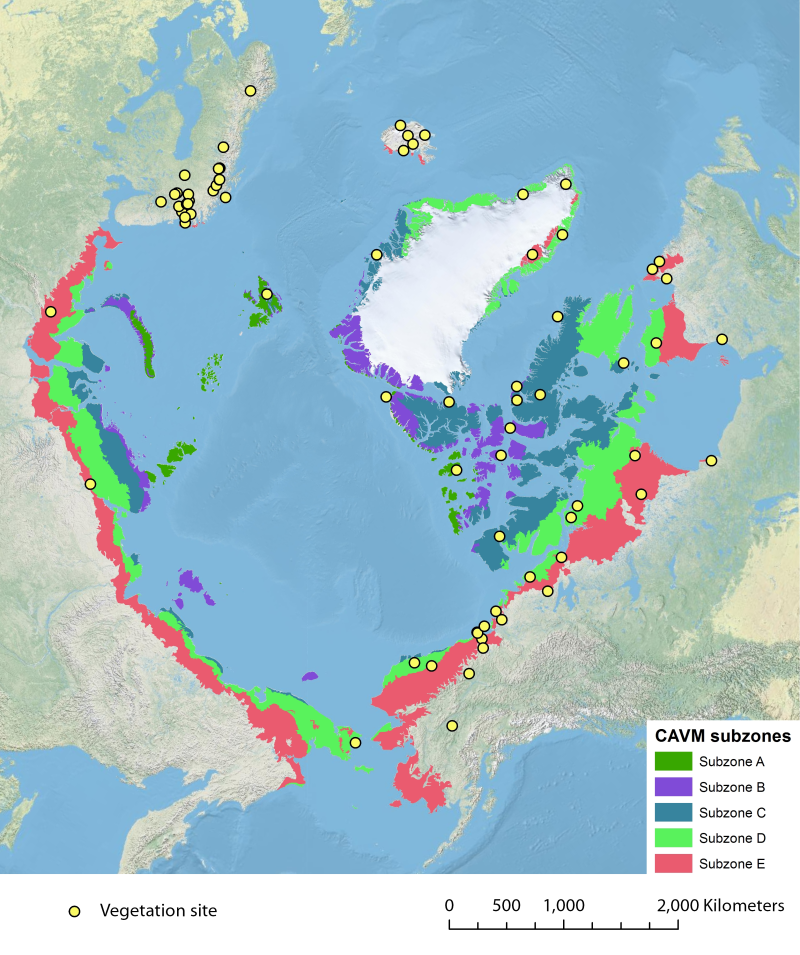
Location of long-term vegetation (including fungi, non-vascular and vascular plants) monitoring sites and programs. Comes from the Arctic Terrestrial Biodiversity Monitoring Plan is developed to improve the collective ability of Arctic traditional knowledge holders, northern communities and scientists to detect, understand and report on long-term change in Arctic terrestrial ecosystems and biodiversity. The report can be seen here http://www.caff.is/publications/view_document/256-arctic-terrestrial-biodiversity-monitoring-plan The monitoring locations are place over the Circumpolar Arctic bioclimate subzones (CAVM Team 2003) http://www.caff.is/flora-cfg/circumpolar-arctic-vegetation-map
-
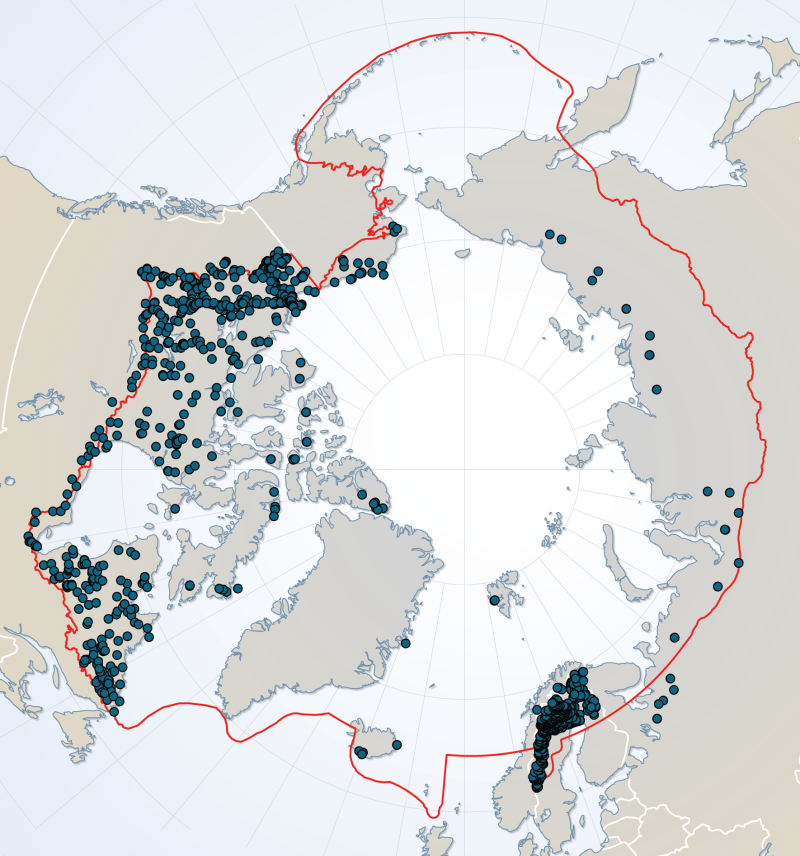
River dataset showing location of study sites in rivers for the Arctic Freshwater Biodiversity Monitoring Plan. Published in the Arctic Freshwater Monitoring Plan Brochure released in 2013 http://www.caff.is/monitoring-series/view_document/277-arctic-freshwater-biodiversity-monitoring-plan-brochure
-

Sites of existing lake biotic and abiotic data as compiled by the Freshwater Expert Monitoring Group (FEMG) of the Circumpolar Biodiversity Monitoring Group (CBMP) Published in the CBMP Freshwater Brochure 2013 https://oaarchive.arctic-council.org/items/e76cce2c-4c87-4eb4-89d3-c88c3ae955d6
-
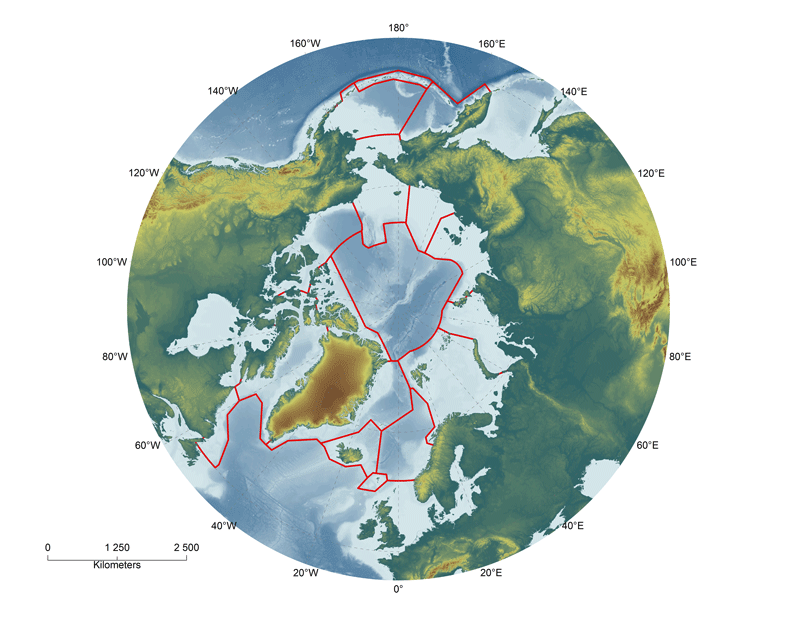
A total of 95 areas of heightened ecological significance have been identified within the Arctic LMEs. The areas were identified primarily on the basis of their ecological importance to fish, birds and/or mammals, as these species are the most widely studied Arctic groups. The majority of areas identified are used by birds (85) and marine mammals (81), with a lower number used by fish (40, most of them spawning areas). About 70 areas are used both by birds and mammals, and only two of the areas identified are used only by fish.The areas of heightened ecological significance comprise a total area of about 12 million km2, or more than half the total area of the ice-covered part of the marine Arctic. The areas are generally not homogenous but comprise subareas used by fish, birds or mammals. Based on the approach used, subareas were identified separately for fish, birds, and mammals, or information on the use of the larger areas by these groupswas summarized. The subareas often overlap and are also often used by two or more species of birds or mammals, such as for breeding in seabird colonies or for staging by waterfowl and shorebirds. Information on species present and the times and purposes of use are given in summary tables for each LME. Thus, while the areas identified as being of heightened ecological significance cover a large total area, this is the aggregate area used over all seasons throughout the year. The area used at any one time is lower due to the strong seasonal pattern in the annual migratory cycles of fish, birds and mammals.
-
Appendix 6.1.1. Freshwater and diadromous fish species by area of occurrence within the High Arctic, Low Arctic and sub-Arctic. Appendix 6.1.2. Freshwater and diadromous fishes of the Palearctic and Nearctic regions. Appendix 6.1.3. Occurrence of freshwater and diadromous fishes in the Arctic and sub-Arctic regions of the seven geographical regions referred to in the main text. Appendix 6.1.4. Freshwater and diadromous fish species status summary for species assessed at some level of risk by country or region
 CAFF - Arctic Biodiversity Data Service (ABDS)
CAFF - Arctic Biodiversity Data Service (ABDS)